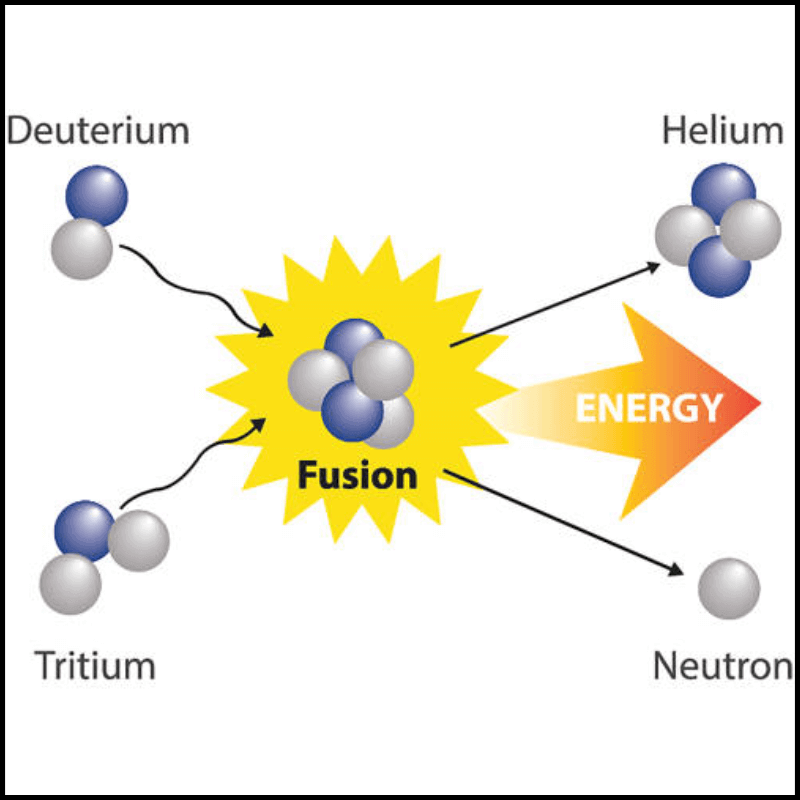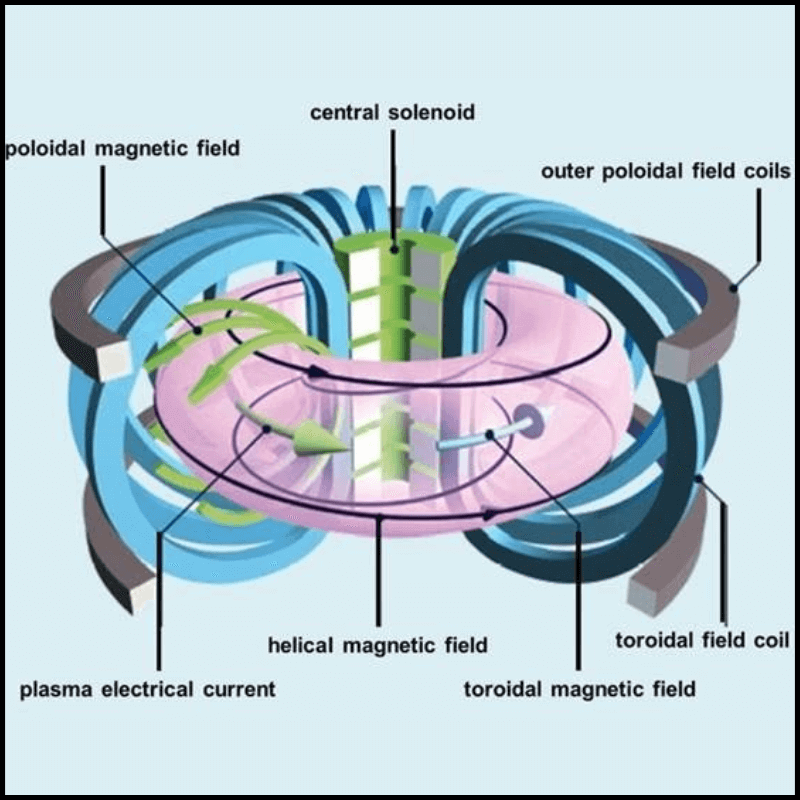
The term “artificial sun” often refers to nuclear fusion research devices that aim to replicate the sun’s energy production process. Read here to learn more about it.
The sun generates energy through nuclear fusion, where hydrogen nuclei merge under extreme pressure and temperature conditions to form helium, releasing a tremendous amount of energy in the process.
Replicating this on Earth presents a potential solution for creating a virtually limitless, clean energy source, considering nuclear fusion produces minimal radioactive waste compared to nuclear fission and does not emit greenhouse gases.
What is nuclear fusion?

Nuclear fusion is a process in which two light atomic nuclei combine to form a heavier nucleus, releasing a vast amount of energy in the process.
- This reaction powers the sun and other stars, where hydrogen nuclei fuse to form helium under extreme temperatures and pressures.
- Fusion contrasts with nuclear fission, where a heavy nucleus splits into two smaller nuclei, also releasing energy but through a different mechanism.
Key Principles of Nuclear Fusion
- High Temperature and Pressure: For fusion to occur, the reactant nuclei must overcome their electrostatic repulsion, as positively charged nuclei naturally repel each other. This is typically achieved at extremely high temperatures (millions of degrees Celsius) and pressures, conditions that enable the nuclei to move fast enough and collide with sufficient force to fuse.
- Energy Release: The mass of the resulting nucleus is slightly less than the total mass of the original nuclei. According to Einstein’s equation E=mc2, the lost mass (m) is converted into energy (E), with c being the speed of light. This energy release is what makes nuclear fusion a potentially unparalleled source of power.
- Fuel: The most practical fusion reactions for power on Earth involve isotopes of hydrogen-deuterium (D) and tritium (T). Deuterium can be extracted from seawater, making it abundantly available, while tritium is scarcer and typically bred from lithium in the fusion reactor itself.
Artificial Sun Projects
- ITER (International Thermonuclear Experimental Reactor): One of the most ambitious nuclear fusion projects, ITER, is an international consortium aiming to build the world’s largest tokamak (a magnetic fusion device) in France. Its goal is to demonstrate the feasibility of fusion as a large-scale and carbon-free source of energy. India is also a member of this project.
- EAST (Experimental Advanced Superconducting Tokamak): Located in China, EAST is a tokamak that has been operational since 2006. It has made significant progress in sustaining long-term plasma fusion, achieving temperatures over 100 million degrees Celsius, which is crucial for fusion to occur.
- KSTAR (Korea Superconducting Tokamak Advanced Research): South Korea’s KSTAR has made headlines for its ability to maintain high-temperature plasma for over 100 seconds, marking a significant step towards commercial fusion energy production.
- DEMO (DEMOnstration Power Plant): While still in the planning stage, DEMO aims to build on ITER’s work to create a fusion power plant that can produce electricity continuously, proving the commercial viability of fusion energy.
Challenges in Creating an Artificial Sun
- Temperature and Pressure: Achieving and maintaining the extreme temperatures (tens of millions of degrees Celsius) and pressure needed for hydrogen nuclei to fuse is a significant engineering and scientific challenge.
- Plasma Confinement: Controlling the hot plasma for long periods without it touching the reactor walls requires sophisticated magnetic confinement techniques, as in tokamaks, or inertial confinement, as explored in other experiments.
- Materials: Developing materials that can withstand the extreme conditions inside a fusion reactor for long periods without degrading is another hurdle.
- Net Energy Gain: One of the biggest challenges is achieving a net energy gain, where the fusion process produces more energy than is consumed in initiating and sustaining it.
Why in the news?
South Korean scientists have been able to produce heat of temperature 100 million Celsius for a record period of 48 seconds.
- The Korea Institute of Fusion Energy’s (KFE) Korea Superconducting Tokamak Advanced Research (KSTAR) fusion reactor reached temperatures seven times that of the Sun’s core.
- The temperature of the core of the Sun is 15 million degrees Celsius.
- The ultimate aim of KSTAR is to sustain plasma temperatures of 100 million degrees for 300 seconds by 2026.
- The International Thermonuclear Experimental Reactor in southern France has the world’s biggest tokamak and what the scientists in South Korea achieve will help French scientists.
What is a Tokamak?

A tokamak is a device designed to harness the energy of fusion, a nuclear reaction where two light atomic nuclei combine to form a heavier nucleus, releasing a tremendous amount of energy in the process.
- The tokamak is one of the most researched fusion reactor types, and its development is central to the field of fusion energy research.
- The principle behind a tokamak is to use magnetic confinement to hold a plasma—a hot, ionized gas in which the fusion reactions occur—at the extremely high temperatures and pressures needed for fusion to take place.
Design and Operation:
The tokamak’s design is essentially toroidal, or doughnut-shaped. It uses a combination of magnetic fields to confine the plasma:
- Toroidal Field: Produced by magnets wrapped around the torus, this magnetic field goes around the doughnut shape in circles and keeps the plasma from touching the reactor walls.
- Poloidal Field: Created by a current driven through the plasma itself, this field helps to stabilize and shape the plasma. The combination of the toroidal and poloidal magnetic fields creates a twisted magnetic field structure that is more effective at confining the plasma.
Key Components:
- Vacuum Vessel: Contains the plasma and the magnetic fields.
- Magnetic Coils: Generate the magnetic fields necessary for the confinement and shaping of the plasma.
- Diverter: A component designed to remove waste material from the plasma without disrupting the fusion process.
- Neutral Beam Injection: This system injects neutral particles into the plasma to heat it and drive the current necessary for the poloidal field.
Conclusion
The successful development of nuclear fusion technology would revolutionize energy production, offering a clean, sustainable, and abundant source of power.
It could significantly reduce reliance on fossil fuels, combat climate change, and provide a long-term solution to the world’s energy needs.
However, despite decades of research and progress, practical, commercial fusion power remains a long-term goal, with several technical, financial, and material challenges yet to be overcome.
Related articles:
-Article by Swathi Satish






Leave a Reply